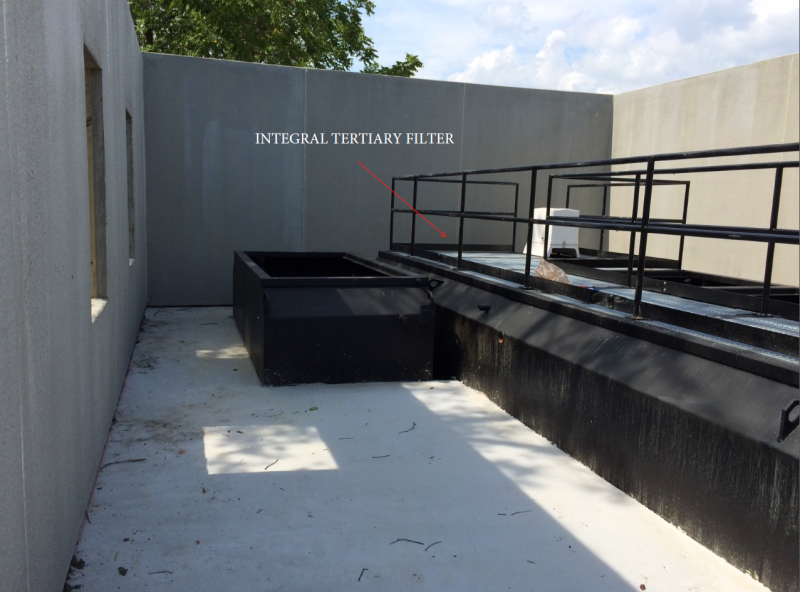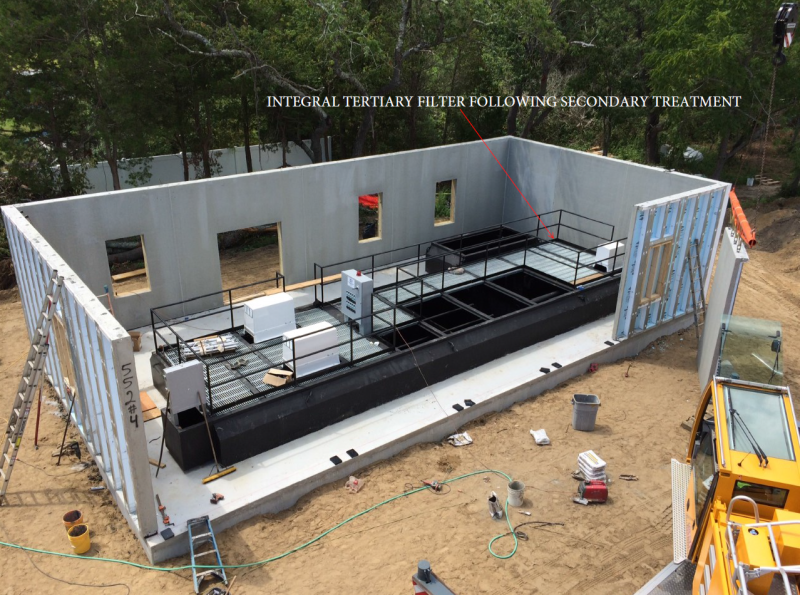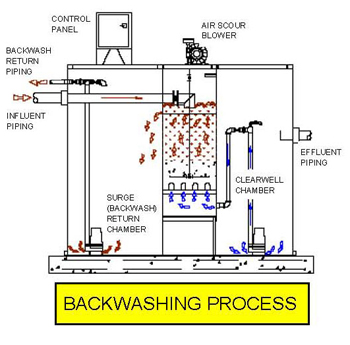.gif) Environmental standards for discharge water, especially from wastewater treatment facilities or systems, are being subject to more stringent effluent requirements. Among the requirements is the need to keep systems and facilities up to date with current environmental regulations. These regulations, in many cases, require the addition of Tertiary Treatment to a new or existing Secondary
Environmental standards for discharge water, especially from wastewater treatment facilities or systems, are being subject to more stringent effluent requirements. Among the requirements is the need to keep systems and facilities up to date with current environmental regulations. These regulations, in many cases, require the addition of Tertiary Treatment to a new or existing Secondary
Wastewater Treatment System (extended aeration process) for further reduction of BOD and TSS as required by Federal and Local Authorities.
Pollution Control Systems tertiary filters are for filtering the liquid effluent from a secondary wastewater treatment system. Tertiary sewage treatment provides for additional removal of suspended solids from the secondary effluent and a further reduction of the biochemical oxygen demand (BOD). The filtering takes place in two parallel flow filter cells, each containing filter media consisting of a layer of anthracite and a layer of sand through which the liquid flows. This multi-media filter is capable of providing a tertiary effluent quality down to 10 mg/l BOD5 and 10 mg/l SS when properly operated.
Treated non-potable wastewater is being used as a new source of water to promote agricultural and aquaculture production, industrial uses, reclamation uses such as irrigation, wash down and toilet flushing, recreational purposes, and artificial recharge. The reuse of tertiary wastewater treatment effluent increases water sustainability in a way that is friendly to the environment.
The standard tertiary filter system provides filter cell flow division, filtration, air scouring, backwashing, and backwash return of the wastewater.


.jpg)
The filtrate percolates through each of the multi-media filter cells and then into the area below the filter nozzle plates. From there, the filtered wastewater flows through the backwash piping, the backwash pumps, and into the clearwell tank. The filtered water in the clearwell will then overflow an effluent weir trough to disinfection and exit the tertiary filter system to complete the treatment process.
When the surface of the filter cells become clogged or covered with solids, the wastewater level begins to rise.

The rising wastewater level activates the air scouring and backwash cycles. The backwash cycle will use filtrate from the clearwell to backwash and dislodge the solids entrapped in the media. The media will be automatically air scoured and backwashed as air and clean filtrate water is pumped through the filter media from the bottom up, dislodging the retained solids. The rising backwash water overflows into the surge (backwash return) chamber. The surge chamber collects the backwash water and, over a several hour period, will return it back to the head of the wastewater treatment system.